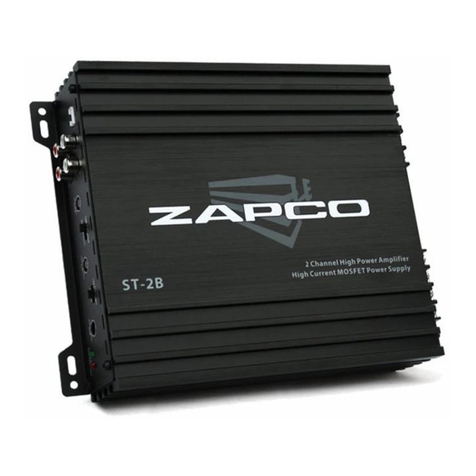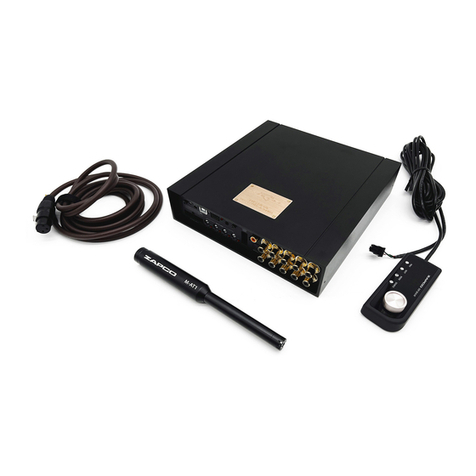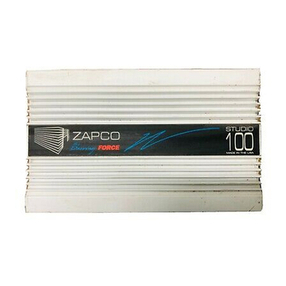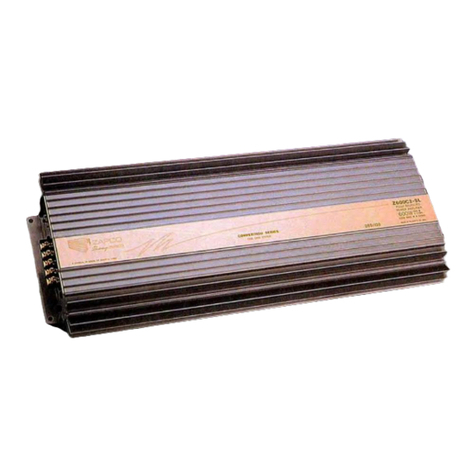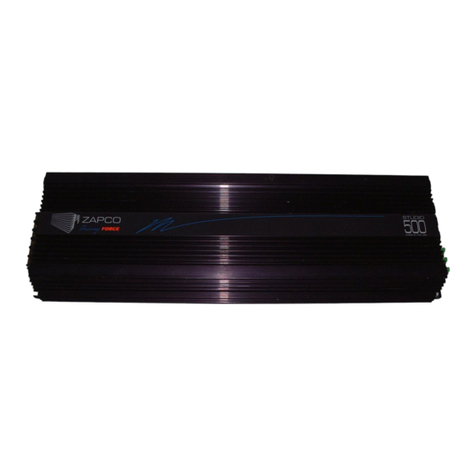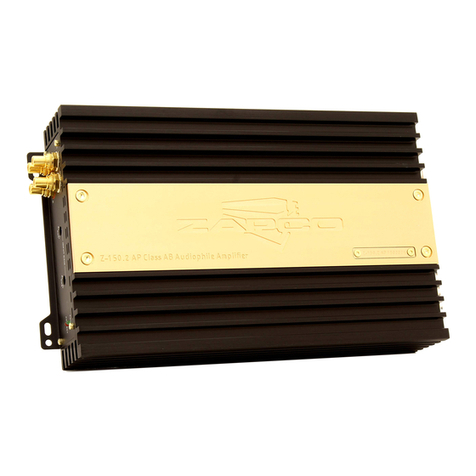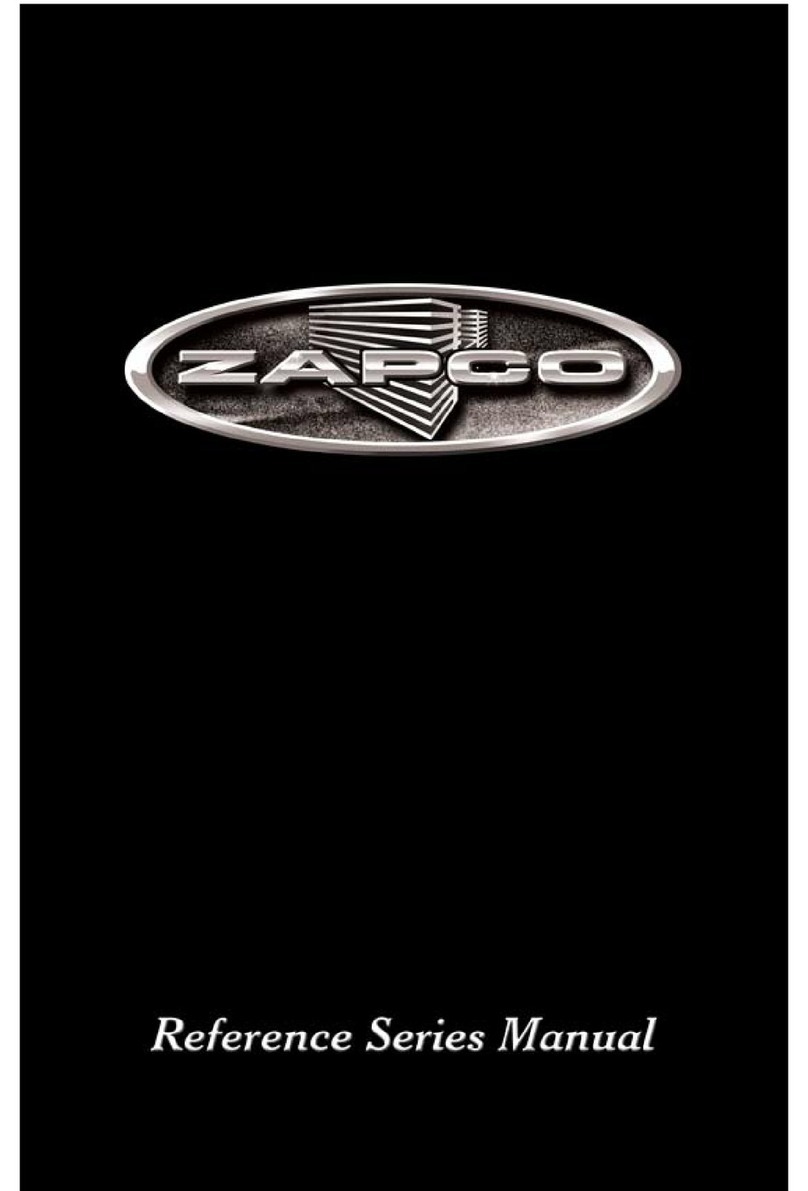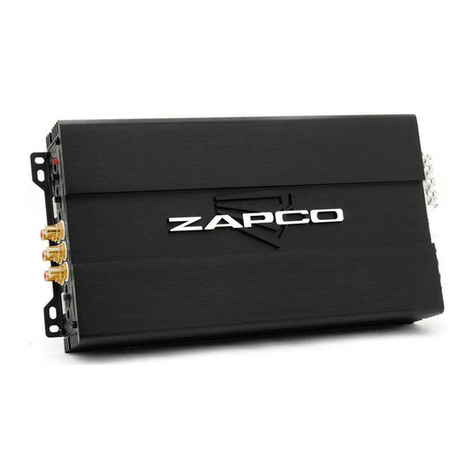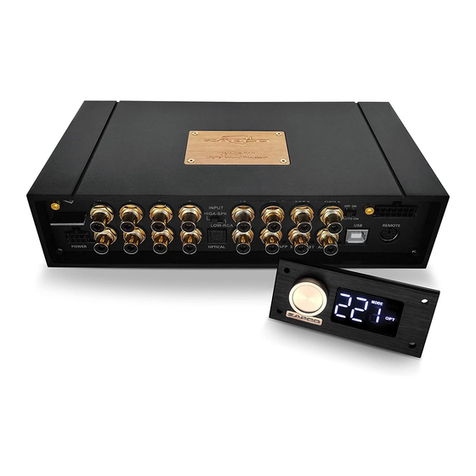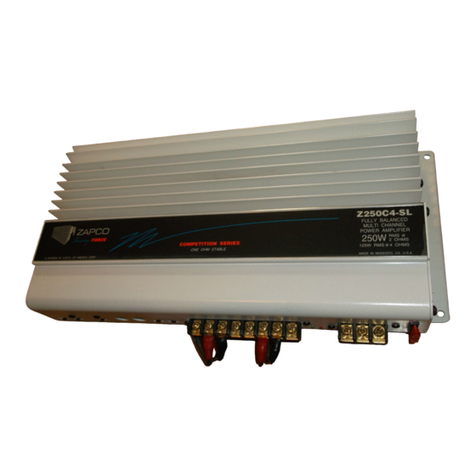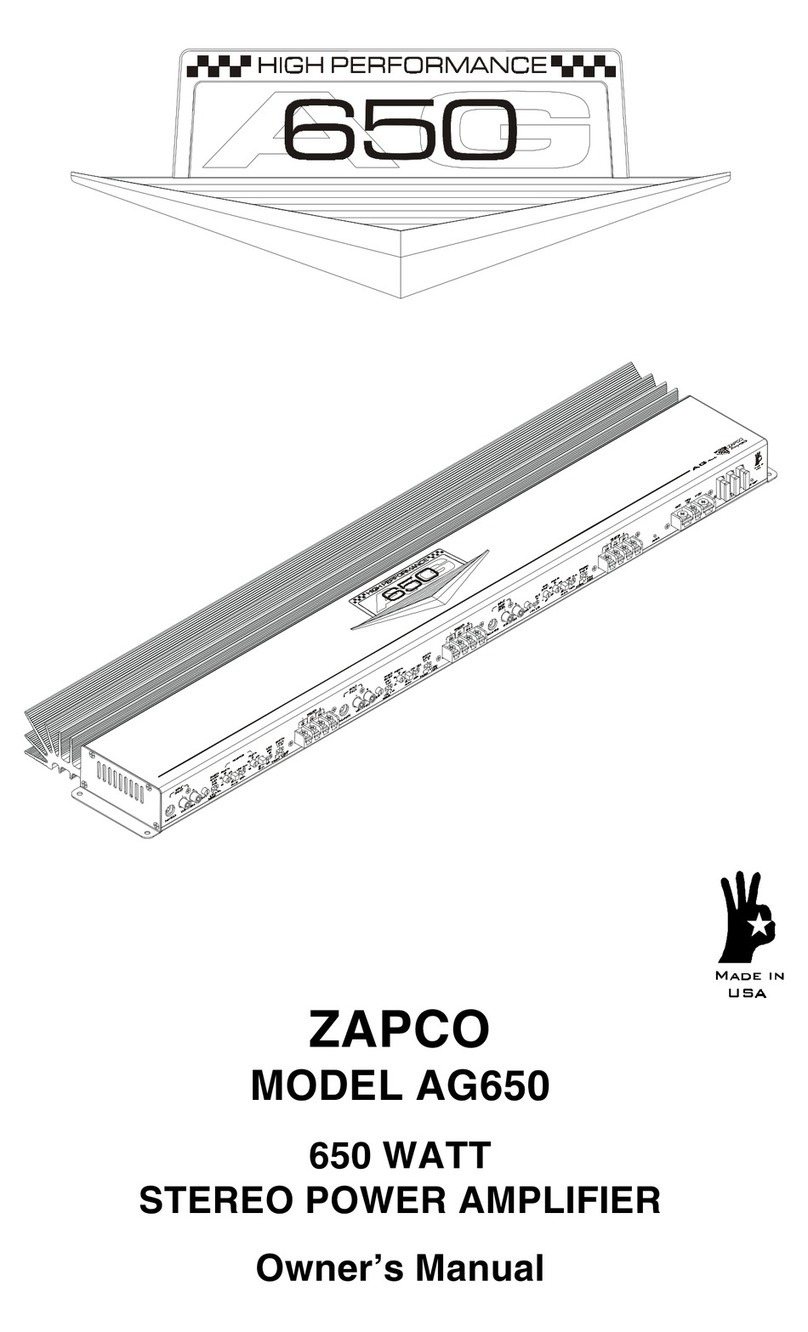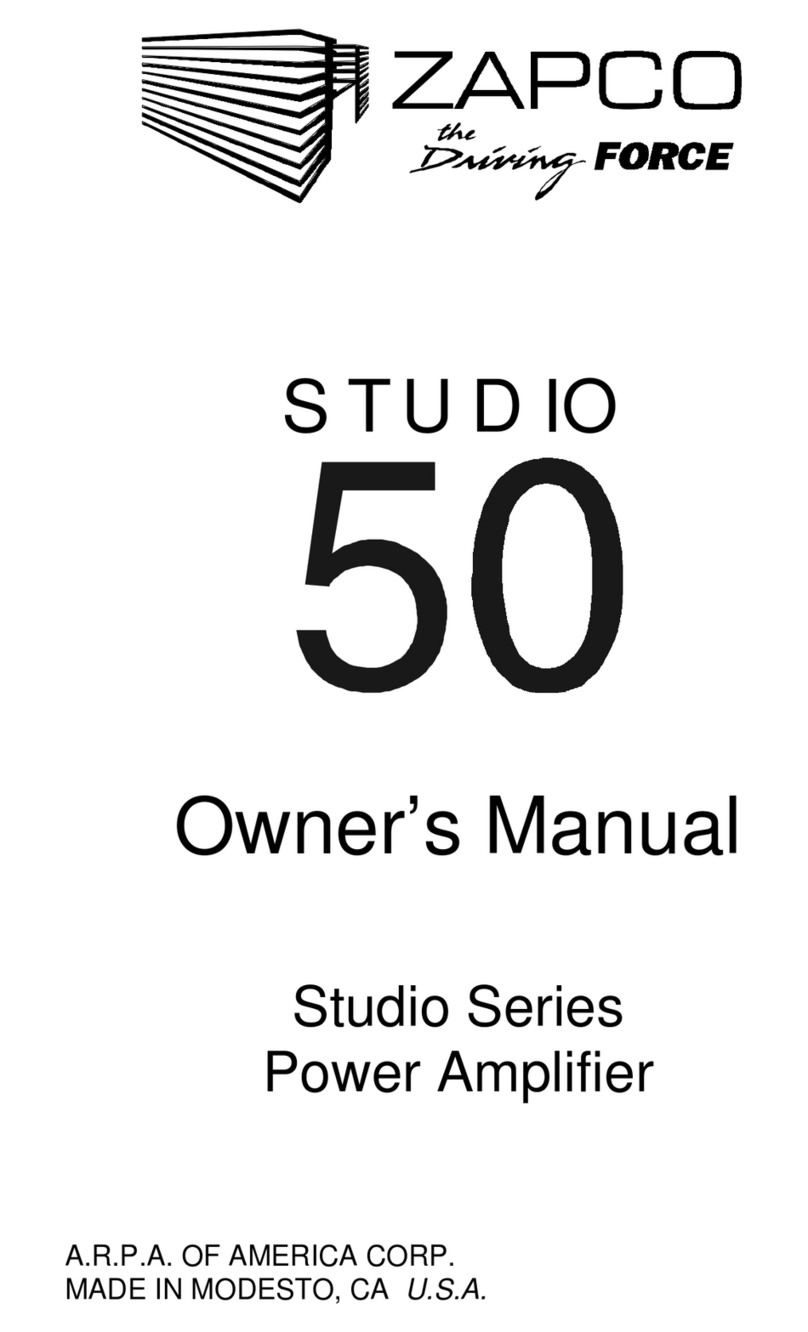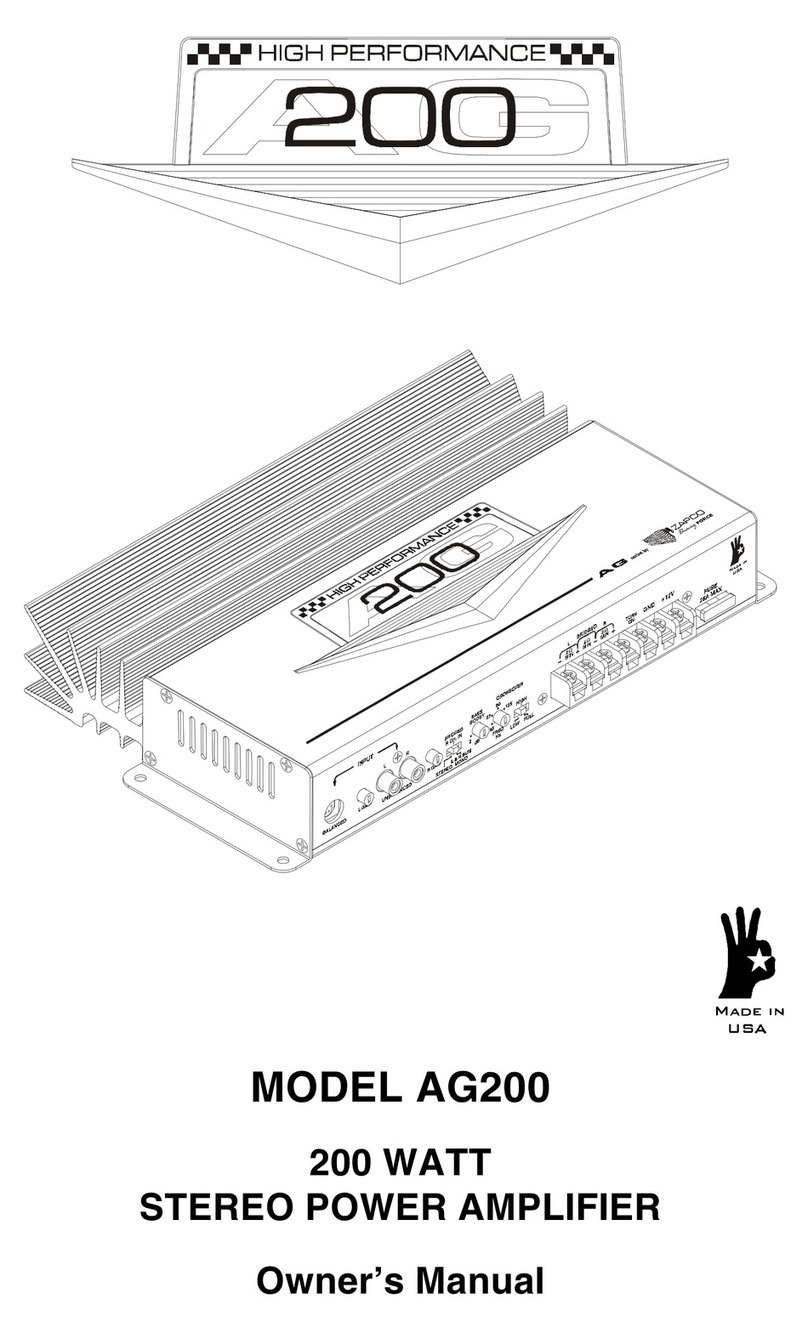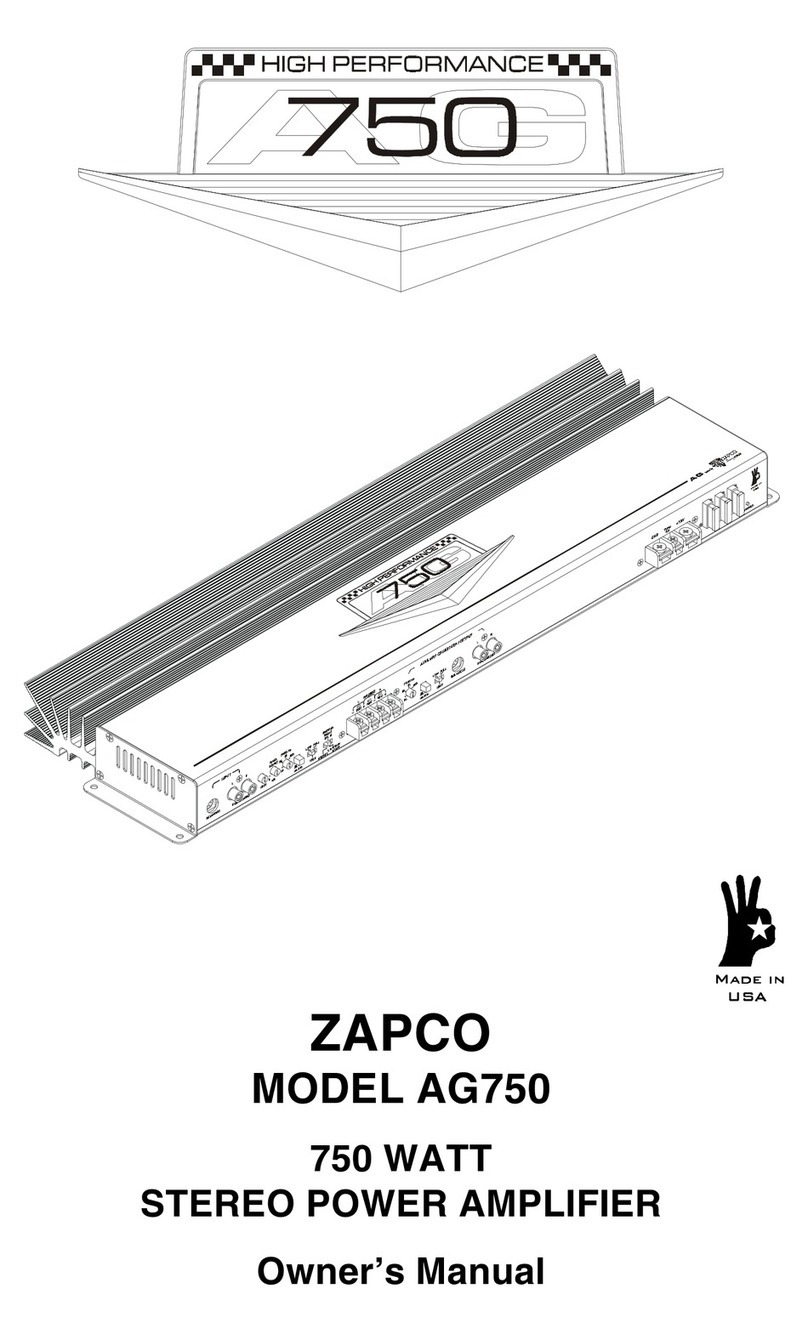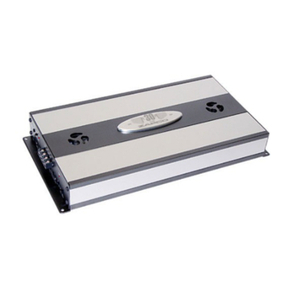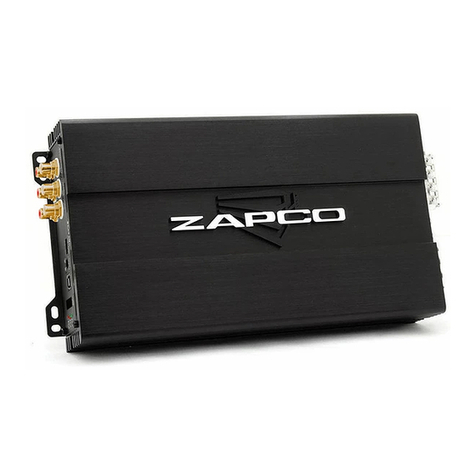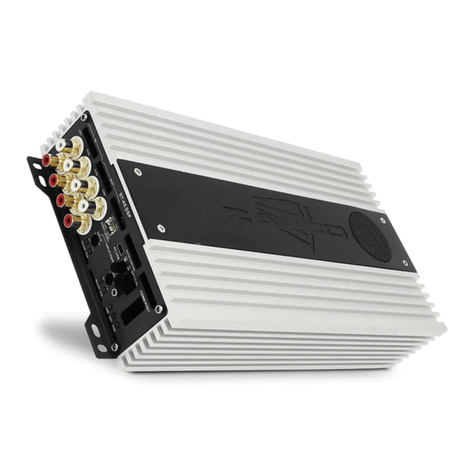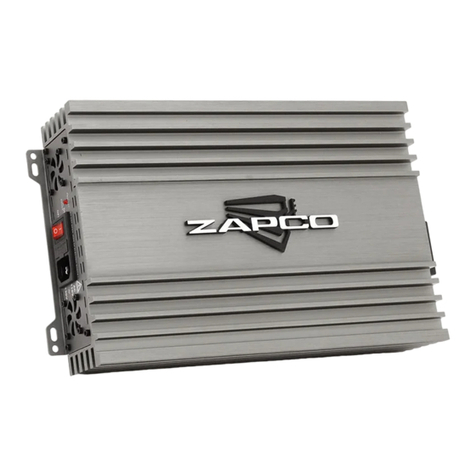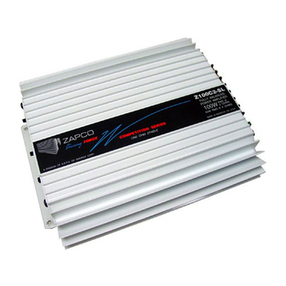
Before you start your installation
ZAPCO highly recommends that a fuse or circuit breaker be placed within 18" of the
battery. Although you will add a fuse or fuse block near the amplifier it is still a possibility
that a pinched power wire between the component fuse and the battery could result in
a short, or even a fire. The protection device should be placed where it can be accessed
easily and all wiring should be routed safely and correctly according to the following
guidelines:
• Do not run wiring close to hot or spinning objects
• Always use wire grommets when routing wire through the firewall or any other
metal panels
• Make sure that the potential for pinched wiring is avoided by routing all wires away
from moving objects, including brake, gas and clutch pedals, etc
When connecting our amplifiers to pre-wired stock speakers, care must be taken that there
are no common connections between left and right speaker wires, i.e. two or more speakers
using the same ground connection (very common in pre-85 cars), as this will cause the
amplifier to go into immediate protection or may cause damage to the amplifier. Output
connections are not common chassis ground. Please follow the hookup instructions in
this owner's manual. Any questions should be directed to your local ZAPCO dealer.
All Wire is not created equal
Please do not use CCA wire with Zapco amplifiers
It is easy to think of wire as just wire but the fact is there are major differences between
the types of wires being offered today. The price of copper has gone up quite a bit lately,
but you will notice that you can still buy heavy primary wire at very reasonable prices.
How can this be? Simple... That lower price wire is not all copper, it is CCA wire.
CCA stands for Copper Clad, Aluminum. That means it is aluminum wire with a thin coating
of copper around the outside of the wire. Does it look like copper wire? Absolutely. But
does it conduct electrical current like copper? Absolutely NOT!
If the wire does not say OFC Copper wire or Solid Copper wire do not use it.
Two things can and likely will happen:
• Because CCA wire can not conduct DC electrical current like copper wire can, your amp
will not get the current it needs to produce its rated power. That means you get less
power and more distortion. It also taxes the amplifier that is trying to make its power,
shortening the life of the amp.
• CCA wire corrodes quickly and causes terminals that used to be tight to become
loose. This causes arcing when electrons to fly around all the open space lookin for
more copper. This causes heat that damages connections and can even eventually
melt the terminal blocks on your amplifier.
In short: While CCA wire is excellent for high frequency AC current (like tweeter voice
coils), it is absolutely bad for high current 12V DC like power and ground for a car audio
amplifier.
We have seen CCA wire become a major cause of amplifier failures as buyers are offered
CCA as a low cost alternative to pure copper wire. So always look at the description of the
contents of wire that you purchase. When someone offers to save you some money with
CCA wire just say "No, thank you". Protect your investment with real copper wire.
Planning your power connections
The power end plates of the Zapco ST-D MINI amplifiers carry the power connections
and the speaker connections and vary somewhat by the number of channels. The main
12-volt power input, the 12-volt turn-on wire, and the main Ground connection are
common to both models.
• The +12V B is the main power input. This must be connected the vehicle battery's
positive (+) terminal, and a main system fuse should be placed close to the battery
• The GND is the main ground or negative connection. This must be securely attached
to bare metal at the vehicle frame, or other heavy chassis component with a direct
connection to the frame
ote: Seat bolts and seat belt bolts are OT good ground points
• The terminal between the main power and ground is the +12 turn-on input (R M)
and can be connected to the head unit turn-on output wire. If none is available it can
be connected to an accessory (ACC) terminal. You should avoid using any ignition-on
(IGN) wire, as they can be noisy
76
